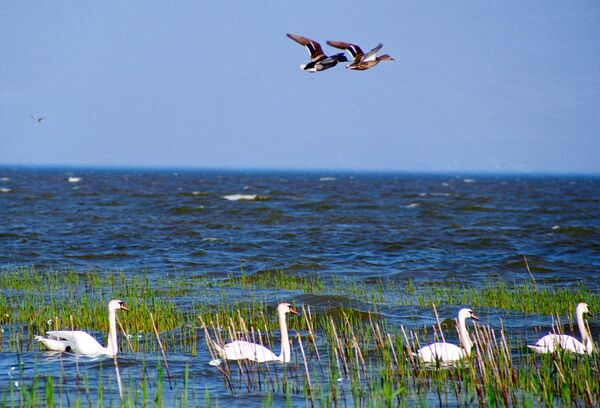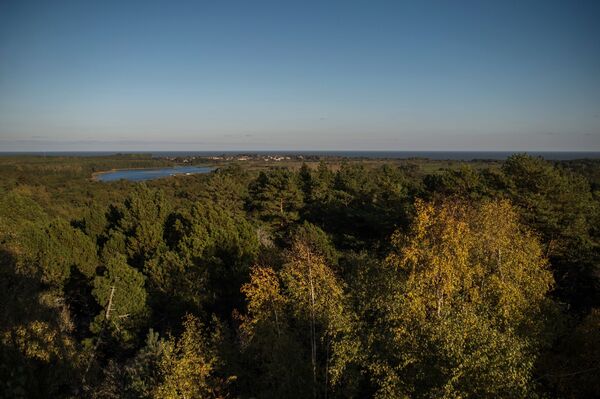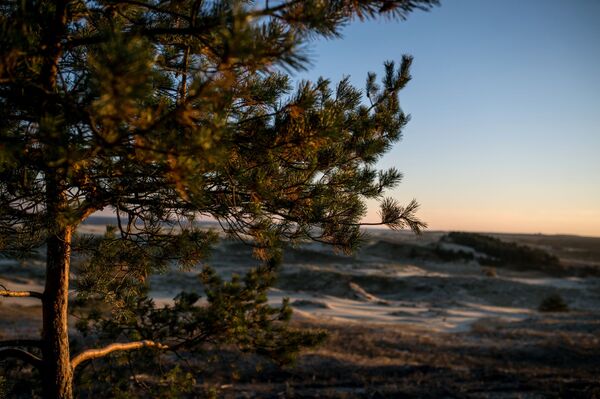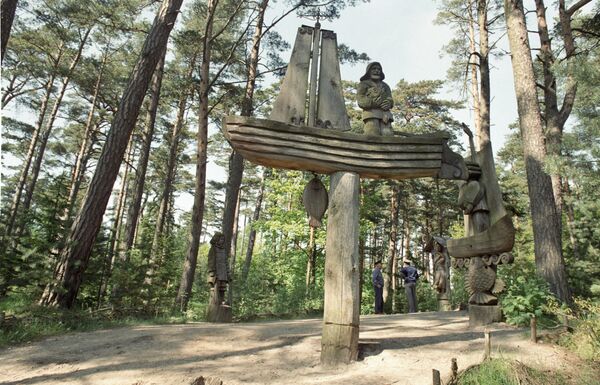The Kurshskaya Kosa National Park, also known as the Curonian Spit, is the smallest and at the same time one of the most visited national parks in Russia. It is located on the narrow strip of land between the salty Baltic Sea and freshwater Curonian Lagoon in the Kaliningrad region.
The area to which the Curonian Spit belongs is called the "Amber Coast," as fossilized organic gemstones have been excavated there extensively for a long time. The northern boundaries of the park are on the Russian-Lithuanian border, so this UNESCO World Heritage Site is shared by the two countries. Enjoy the stunning pictures in this photo gallery.

1/18
© Sputnik / Evgenya Novozhenina
The common reed grass on the shore of the Curonian Lagoon in Curonian Spit National Park.

The inhabitants of the nature reserve.

3/18
© Sputnik / Evgenya Novozhenina
Young people at a viewing point in Curonian Spit National Park. The observation deck is situated at the highest point of the Bolotnaya dune, or Bruhberg dune, offering a beautiful view of the forest, the sea and the bay.

The Dancing Forest in Curonian Spit National Park.

5/18
© Sputnik / Evgenya Novozhenina
Muller Height in the national park. It was named after a Konigsberg forester who invented a new way of planting forests to stop the movement of sand dunes.

6/18
© Sputnik / Evgenya Novozhenina
Visitors walk on the shore of the Curonian Lagoon in the Curonian Spit National Park. The national park has 6 hiking trails, so that visitors may discover the wonderful world of the Curonian Spit without inflicting any harm on it.

7/18
© Sputnik / Evgenya Novozhenina
A pine in the Curonian Spit National Park.

A wooden sculpture ensemble in the park.

9/18
© Sputnik / Evgenya Novozhenina
A view of the Efa Height from an observation point. The highest point of the Orekhovaya dune (55 meters) is named Efa after the forester Franz Wilhelm Efa, whose work has been devoted to the study and consolidation of mobile sands.

The Curonian Spit is considered the largest sand bay-bar in the world.

11/18
© Sputnik / Evgenya Novozhenina
Ancient trees of Korolevsky Bor, or the Old Royal Forest of the Grenz Forestry, were never cut down or threatened by sand dunes. In the 17th century, the Grenz Forestry was set aside for the royal hunt.

12/18
© Sputnik / Evgenya Novozhenina
Chaika Lake in the Curonian Spit National Park. It is the largest freshwater lake in the Curonian Spit, which earlier had even a larger area. Unfortunately, in the 19th century, its size decreased when sand from dunes blew into the water.

Old fishing boat near Preilan on the Curonian Spit.

Sand dunes of the Curonian Spit are among the highest in Europe.

15/18
© Sputnik / Evgenya Novozhenina
Visitors walk in the Curonian Spit National Park. Every year, hundreds of thousands of tourists come to the island to enjoy its unique nature.

16/18
© Sputnik / Evgenya Novozhenina
A view of the Efa Height from an observation point.

17/18
© Sputnik / Evgenya Novozhenina
Trees in the Curonian Spit National Park.

18/18
© Sputnik / Evgenya Novozhenina
Visitors walk in the Curonian Spit National Park.

